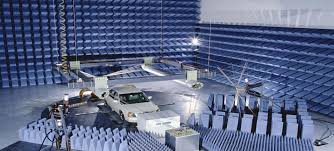Electromagnetic Compatibility (EMC) testing is essential for any electronic product before it enters the market. EMC testing equipment plays a crucial role in identifying whether a device can operate as intended without interfering with—or being affected by—other nearby electronic systems. This article explores the best EMC testing equipment, their uses, and why they’re critical in today’s tech-driven world.
🔍 What is EMC Testing?
EMC testing ensures that electrical and electronic equipment does not emit excessive electromagnetic interference (EMI) and remains immune to external sources of interference. It is a mandatory requirement for regulatory compliance in many countries, including CE marking in Europe and FCC certification in the U.S.
⚙️ Types of EMC Testing Equipment
To carry out reliable and effective EMC testing, various specialized instruments are used. The most important types of EMC testing equipment include:
1. EMI Receivers and Spectrum Analyzers
- Purpose: Detect and analyze electromagnetic emissions.
- Key Features: Wide frequency range, high sensitivity, fast scan speeds.
- Popular Brands: Rohde & Schwarz, Keysight, Tektronix.
2. Signal Generators
- Purpose: Produce controlled RF signals for immunity testing.
- Key Features: Stable frequency output, amplitude modulation, phase control.
- Common Uses: Radiated and conducted immunity tests.
3. Anechoic Chambers and Shielded Rooms
- Purpose: Provide an isolated testing environment free from external EMI.
- Key Features: RF shielding, absorption of radiated signals, controlled ambient conditions.
- Application: Radiated emission and immunity testing.
4. Current Probes and LISNs (Line Impedance Stabilization Networks)
- Current Probes: Clamp around cables to measure conducted emissions.
- LISNs: Standardize impedance and isolate power supply noise for conducted emission testing.
5. EMC Antennas
- Purpose: Transmit and receive electromagnetic signals over a broad frequency range.
- Types: Biconical, log-periodic, horn antennas.
- Use: Radiated emission and immunity measurements.
6. EM Injection Clamps and Coupling/Decoupling Networks (CDNs)
- Purpose: Inject disturbance signals into power or signal lines.
- Use: Conducted immunity tests as per standards like IEC/EN 61000-4-6.
✅ Features to Look for in EMC Testing Equipment
- Compliance with International Standards (CISPR, MIL-STD, IEC, FCC)
- High Frequency Range to cover all relevant testing bands
- Accuracy and Sensitivity for precise measurements
- User-Friendly Software for control and data analysis
- Calibration Support to ensure ongoing reliability
💡 Applications of EMC Testing Equipment
- Consumer Electronics: Mobile phones, computers, TVs
- Automotive Industry: ECUs, infotainment systems, EV chargers
- Medical Devices: Pacemakers, monitors, imaging systems
- Aerospace and Defense: Avionics, communication systems
- Industrial Equipment: Robotics, automation systems, control panels
🧪 EMC Test Labs and Equipment Integration
Many EMC test labs integrate all these instruments into automated test setups to ensure repeatability, speed, and compliance. These systems can be custom-built or provided by vendors as turnkey EMC test solutions.
🔄 Leading EMC Equipment Manufacturers
- Rohde & Schwarz: Known for high-performance EMI receivers and signal generators.
- Keysight Technologies: Offers complete EMC test systems and software.
- ETS-Lindgren: Specialists in anechoic chambers and test environments.
- Schwarzbeck and Teseq (AMETEK): Renowned for antennas, LISNs, and CDNs.
Conclusion
EMC testing equipment is a vital part of ensuring electronic products are safe, reliable, and compliant with global standards. Choosing the right tools—and understanding how they work together—helps manufacturers avoid costly redesigns, regulatory delays, and potential product failures in the field.
Whether you’re setting up an in-house EMC lab or outsourcing to accredited facilities, investing in the right EMC testing equipment is a crucial step in any successful product development cycle.






